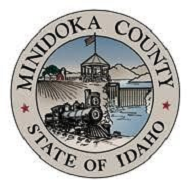Loading Data
Find USDA Eligible Properties in Minidoka County
 browse list of realtors working in Minidoka County
browse list of realtors working in Minidoka County
Minidoka county has 1 usdaproperties.com realtor ready to help with your search!
| April Featured Agent | |
|---|---|
| Juan Silvaz | from Turn Key Realty |
Looking to buy in Minidoka County, Idaho?
There are 425 USDA backed residential loans in Minidoka county with an average loan balance of $104,366. Over 79% of the loans helped first time home buyers. Borrowers were an average age of 38 years old. The typical appraised home value was around $106,061. On average the rural home size purchased with this loan was approximately 1,339 SqFt. Minidoka county applies the standard USDA income limits to determine loan eligibility. For a household of upto 4 people the income limit is $90,300. For a household of between 5 and 8 people the income limit is increased to $119,200.
The size of Minidoka County is roughly 1,976 square kilometers. There are no geographical USDA loan restrictions in this county. The influence score for Minidoka County is 8. Look below for the interactive county level map illustration below for more details.
Select from the list of cities below or use the search feature to find active property listings in a city where you would like to live.
Start your search for USDA loan eligible properties in the cities of Minidoka County, ID ![]()
* cities most likely to have USDA loan eligible properties for sale.
*Acequia • Adelaide • Amalga • Budge • *Heyburn • Hynes • *Minidoka • Myers • Norland • *Paul • *Rupert • Schow • Travers
A USDA loan is a mortgage option available to eligible homebuyers that is sponsored by the United States Department of Agriculture to promote homeownership in rural communities. USDA Loans, sometimes called "RD Loans," offer 100% financing options on eligible rural properties. USDAProperties can help you find USDA properties in Minidoka County.
View the detailed USDA boundaries and read about general conditions of
Minidoka County, Idaho
 .
.Minidoka County, located in the south-central part of Idaho, was established on January 28, 1913. It was named after the Dakota Sioux word "minidoka," meaning "a fountain or spring of water." The county has its origins from the earlier counties of Lincoln, which was established in 1895, and later Cassia County, which was formed in 1879.
The region's history dates back even further with the presence of Native American tribes, such as Shoshone and Bannock, who inhabited the area long before European settlers arrived. In the late 19th and early 20th centuries, the region witnessed an influx of settlers due to the construction of the Minidoka Dam, which was completed in 1904. The dam, built on the Snake River, formed Lake Walcott and facilitated the irrigation of arid lands for agricultural purposes. This development attracted farmers seeking new opportunities, leading to an uptick in population and the creation of new towns, such as Rupert and Heyburn.
A fun fact about Minidoka County is that it houses a National Historic Site, the Minidoka War Relocation Center. This site, also known as "Hunt Camp," was one of ten internment camps established for Japanese Americans during World War II. Between 1942 and 1945, around 13,000 Japanese Americans were incarcerated at this site, making it an essential part of the United States' complicated wartime history. Today, the Minidoka National Historic Site serves as a reminder of this dark period and as a location for historical education and reflection.
Featured Cities of Idaho






